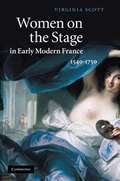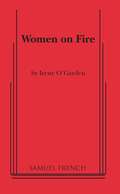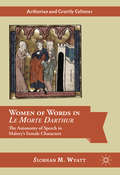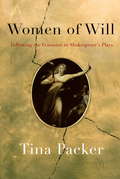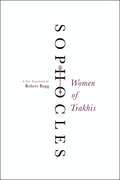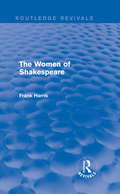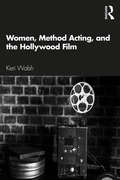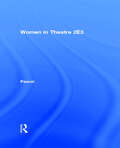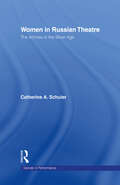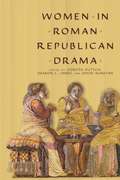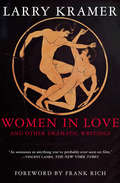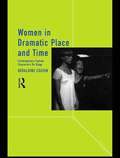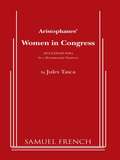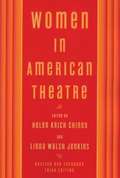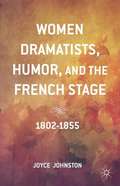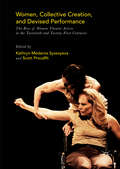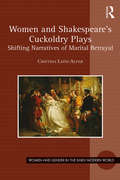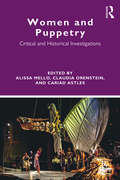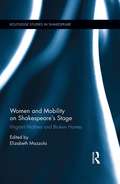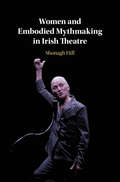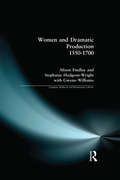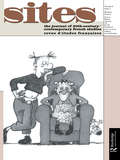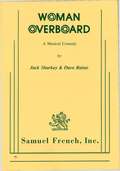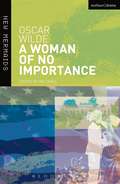- Table View
- List View
Women on the Stage in Early Modern France: 1540-1750
by Virginia ScottFocusing on actresses in France during the early modern period, Virginia Scott examines how the stereotype of the actress has been constructed. The study then moves beyond that stereotype to detail the reality of the personal and artistic lives of women on the French stage, from the almost unknown Marie Ferr_ - who signed a contract for 12 livres a year in 1545 to perform the 'antiquailles de Rome or other histories, moralities, farces, and acrobatics' in the provinces - to the queens of the eighteenth-century Paris stage, whose 'adventures' have overshadowed their artistic triumphs. The book also investigates the ways in which actresses made invaluable contributions to the development of the French theatre in the seventeenth and eighteenth centuries, and looks at the 'afterlives' of such women as Armande B_jart, Marquise Du Parc, Charlotte Desmares, Adrienne Lecouvreur, and Hippolyte Clairon in biographies, plays, and films.
Women On Fire
by Irene O' GardenMonologues Characters: 1-12female . Unit set . This evening of twelve emotionally charged monologues starred Judith Ivey Off Broadway, where its run was extended twice. From ad exec to Midwest mom to care-giver to construction worker, each character is on fire in her own way - with passion, fear, self-discovery, even shopping! Exploring the breadth of women's issues with humor and wisdom, the monologues offer excellent roles for one or more mature actresses. Women on Fire earned the highest rating for audience satisfaction from the Wall Street Journal/Zagat Theatre Survey. . "Bewitching ... astounding ... heartbreaking." - The New York Times ". "Heartwarming, riveting drama." - NYTheatre.com . "Fresh, spirited ... plumbing the secret depths of ordinary women." - Backstage. . "Hot pick." - New York Newsday . . "A rare and exquisite evening.... Lyrical, touching substantial and ultimately profound.... Cancel all other appointments and treat yourself to this extraordinary evening of sublime writing." -Southampton Press . "Passionate and insightful.... Each character is memorable." - Riverhead Independent
Women of Words in Le Morte Darthur
by Siobhán M. WyattOffering a new reading of Malory's famed text, Le Morte Darthur, this book provides the first full-length survey of the alterations Malory made to female characters in his source texts. Through detailed comparisons with both Old French and Middle English material, Siobh#65533;n M. Wyatt discusses how Malory radically altered his French and English source texts to create a gendered pattern in the reliability of speech, depicting female discourse as valuable and truthful. Malory's authorial crafting indicates his preference for a certain "type" of female character: self-governing, opinionated, and strong. Simultaneously, the portrayal of this very readable "type" yields characterization. While late medieval court records indicate an increasingly negative attitude towards female speech and a tendency to punish vociferous women as "scolds," Malory makes the words of chiding damsels constructive. While his contemporary writers suppress the powers of magical women, Malory empowers his enchantress characters; while the authors of his French source texts accentuate Guinevere's flaws, Malory portrays her with sympathy.
Women of Will
by Tina PackerFrom one of the country's foremost experts on Shakespeare and theatre arts, actor, director, and master teacher Tina Packer offers an exploration--fierce, funny, fearless--of the women of Shakespeare's plays. A profound, and profoundly illuminating, book that gives us the playwright's changing understanding of the feminine and reveals some of his deepest insights. Packer, with expert grasp and perception, constructs a radically different understanding of power, sexuality, and redemption. Beginning with the early comedies (The Taming of the Shrew, Two Gentlemen of Verona, The Comedy of Errors), Packer shows that Shakespeare wrote the women of these plays as shrews to be tamed or as sweet little things with no definable independent thought, virgins on the pedestal. The women of the histories (the three parts of Henry VI; Richard III) are, Packer shows, much more interesting, beginning with Joan of Arc, possibly the first woman character Shakespeare ever created. In her opening scene, she's wonderfully alive--a virgin, true, sent from heaven, a country girl going to lead men bravely into battle, the kind of girl Shakespeare could have known and loved in Stratford. Her independent resolution collapses within a few scenes, as Shakespeare himself suddenly turns against her, and she yields to the common caricature of his culture and becomes Joan the Enemy, the Warrior Woman, the witch; a woman to be feared and destroyed . . . As Packer turns her attention to the extraordinary Juliet, the author perceives a large shift. Suddenly Shakespeare's women have depth of character, motivation, understanding of life more than equal to that of the men; once Juliet has led the way, the plays are never the same again. As Shakespeare ceases to write about women as predictable caricatures and starts writing them from the inside, embodying their voices, his women become as dimensional, spirited, spiritual, active, and sexual as any of his male characters. Juliet is just as passionately in love as Romeo--risking everything, initiating marriage, getting into bed, fighting courageously when her parents threaten to disown her--and just as brave in facing death when she discovers Romeo is dead. And, wondering if Shakespeare himself fell in love (Packer considers with whom, and what she may have been like), the author observes that from Juliet on, Shakespeare writes the women as if he were a woman, giving them desires, needs, ambition, insight.Women of Will follows Shakespeare's development as a human being, from youth to enlightened maturity, exploring the spiritual journey he undertook. Packer shows that Shakespeare's imagination, mirrored and revealed in his female characters, develops and deepens until finally the women, his creative knowledge, and a sense of a larger spiritual good come together in the late plays, making clear that when women and men are equal in status and sexual passion, they can--and do--change the world. Part master class, part brilliant analysis--Women of Will is all inspiring discovery.From the Hardcover edition.
Women of Trakhis
by SophoclesAmong the most celebrated plays of ancient Athens, Women of Trakhis is one of seven surviving dramas by the great Greek playwright, Sophocles, now available from Harper Perennial in a vivid and dynamic new translation by award-winning poet Robert Bagg. A powerful drama centered on a desperate wife’s attempts to hold onto her wandering husband, the great Herakles, Women of Trakhis is the tragic tale of how age-old jealousy takes down one of the ancient world’s most feared and storied heroes. This is Sophocles, vibrant and alive, for a new generation.
The Women of Shakespeare (Routledge Revivals)
by Frank HarrisFrank Harris argues that the way women are presented in Shakespeare’s plays and sonnets are a reflection of the real-life women in his life, namely his wife, mother, mistress and daughter. Originally published in 1911, The Women of Shakespeare also analyses the traditional criticism of the time and places his own views in this context. This title will be of interest to students of English Literature.
Women, Method Acting, and the Hollywood Film
by Keri WalshWomen, Method Acting, and the Hollywood Film is the first study dedicated to understanding the work of female Method actors on film. While Method acting on film has typically been associated with the explosive machismo of actors like Marlon Brando and Robert De Niro, this book explores an alternate tradition within the Method—the work that women from the Actors Studio did in Hollywood. Covering the period from the end of the Second World War until the 1970s, this study shows how the women associated with the Actors Studio increasingly used Method acting in ways that were compatible with their burgeoning feminist political commitments and developed a style of feminist Method acting. The book examines the complex intersection of Method acting, sexuality, and gender by analyzing performances such as Kim Hunter’s in A Streetcar Named Desire, Julie Harris’s in The Member of the Wedding, Shelley Winters’s in The Big Knife, Geraldine Page’s in Sweet Bird of Youth, and Jane Fonda’s in Coming Home. Challenging the longstanding assumption that Method acting’s approaches were harmful to women and incompatible with feminism, this book argues that some of Hollywood’s most interesting female actors, and leading feminists, emerged from the Actors Studio in the period between the 1950s and the 1970s. Written for students and scholars of Film Studies, Cultural Studies, Theatre and Performance Studies, and Gender Studies, Women, Method Acting, and the Hollywood Film reshapes the way we think of a central strain in American screen acting, and in doing so, allows women a new stake in that tradition.
Women in Theatre 2#3 (Contemporary Theatre Review Ser.)
by Julia PascalFirst Published in 1996. Routledge is an imprint of Taylor & Francis, an informa company.
Women in Russian Theatre: The Actress in the Silver Age (Gender in Performance)
by Catherine SchulerWomen in Russian Theatre is a fascinating feminist counterpoint to the established area of Russian theatre populated by male artists such as Stanislavsky, Chekov and Meyerhold. With unprecedented access to newly-opened files in Russia, Catherine Schuler brings to light the actresses who had an impact upon Russian modernist theatre. Schuler brings to light the extradordinary lives and work of eight Russian actresses who flourished on the stage between the late nineteenth and early twentieth century.
Women in Roman Republican Drama
by Dorota Dutsch Sharon L. James David KonstanLatin plays were written for audiences whose gender perspectives and expectations were shaped by life in Rome, and the crowds watching the plays included both female citizens and female slaves. Relationships between men and women, ideas of masculinity and femininity, the stock characters of dowered wife and of prostitute all of these are frequently staged in Roman tragedies and comedies. This is the first book to confront directly the role of women in Roman Republican plays of all genres, as well as to examine the role of gender in the influence of this tradition on later dramatists from Shakespeare to Sondheim. "
Women in Love: And Other Dramatic Writings (Books That Changed the World)
by Larry KramerScreenplays and scripts from the playwright of The Normal Heart.&“A valuable showcase of an important writer&’s early career.&”—The Bay Area Reporter Larry Kramer has been described by Susan Sontag as &“one of America&’s most valuable troublemakers.&” As Frank Rich writes in his Foreword to this collection of writings for the screen and stage, &“his plays are almost journalistic in their observation of the fine-grained documentary details of life . . . that may well prove timeless.&” The title work, the Oscar-nominated screenplay for Women in Love, is a movie &“as sensuous as anything you&’ve probably ever seen on film&” (The New York Times). The screenplay is accompanied by Kramer&’s reflections on the history of the production, sure to be of interest to any student of film. This volume also includes several early plays, Sissies&’ Scrapbook, A Minor Dark Age, and the political farce Just Say No, illuminating the development of one of our most important literary figures. &“Since his screenplay for Women in Love, Kramer has been a prophet of psychic health and catastrophe among us.&” (from The American Academy of Arts and Letters citation). Women in Love &“A visual stunner and very likely the most sensual film ever made.&”—New York Daily News &“Throughout Larry Kramer&’s literate scenario, the Lawrentian themes blaze and gutter. The sooty mind-crushing coal mines that Lawrence knew like the back of his hand are re-created in all their malignance. The annealing quality of sex is exhibited in the most erotic—and tasteful—lust scenes anywhere in contemporary film.&”—Time
Women in Dramatic Place and Time: Contemporary Female Characters on Stage
by Geraldine CousinFirst published in 1996. Routledge is an imprint of Taylor & Francis, an informa company.
Women in Congress
by Jules TascaA Hilarious version of Aristophanes' Greek classic. Praxagora, the leader of the women of Athens, plots to take over the government which is run by men and replace it with a new order run by women. Praxagora has the women of Athens dress up as men and vote in congress to turn over the reins of leadership to the women. When this measure is passed, the women unanimously vote Praxagora in as the Chief Executrix. Praxagora and the women then proceed to turn the Greek world topsy turvy legislating free love, male female role reversal and a communistic utopia that brings on the unlikely proceedings to a funny festive conclusion.
Women in American Theatre (3rd Edition)
by Helen Krich Chinoy Linda Walsh JenkinsNewly revised and expanded, Women in American Theatre is a unique resource that challenges preconceptions by exploring and celebrating the heritage of women in American theater. In this new edition, the editors have collected a series of interviews and essays that address the contributions of women to theater, the recurring patterns of their participation and the problems as well as successes they have encountered in developing their careers. Helen Krich Chinoy is professor emeritus of theater at Smith College, where she taught for over 25 years. Linda Walsh Jenkins formerly was a theater professor at Northwestern University and a dramaturg in Chicago theater.
Women Dramatists, Humor, and the French Stage
by Joyce JohnstonFilling a critical void, this book examines French women dramatists of the nineteenth century who managed to have their works staged prior to the lifting of censorship laws in 1864. Sophie de Bawr (1773 1860), Sophie Gay (1776 1852), Virginie Ancelot (1792 1875), and Delphine Gay de Girardin (1804 1855) all staged successful plays at Paris's top venues (Theatre Francais and Odeon) or at other selective theatres (Ambigu-Comique, Vaudeville, Gymnase) during this period without the aid or protection of a male coauthor. Between 1802 and 1855, all four of these dramatists were heavily involved in the literary scene of their day and hosted their own salons, venues essential for any male author wishing to see his works published and accepted among the public. While not always directly engaged in the politics of the day in their theater, these dramatists were aware of and influenced by the public sphere. Though none staged what today's critics would refer to as overtly feminist drama, through their use of humor, Bawr, Gay, Ancelot, and Girardin all cast aspersion upon patriarchal dominance and reconstructed ideals of womanhood that rejected traditional submissive roles. "
Women, Collective Creation, and Devised Performance
by Kathryn Mederos Syssoyeva Scott ProudfitThis book explores therole and centrality of women in the development of collaborative theatrepractice, alongside the significance of collective creation and devising in thedevelopment of the modern theatre. Tracing a web of women theatremakers in Europeand North America, this book explores the connections between early twentiethcentury collective theatre practices such as workers theatre and the dramaticplay movement, and the subsequent spread of theatrical devising. Chaptersinvestigate the work of the Settlement Houses, total theatre in 1920s' France,the mid-century avant-garde and New Left collectives, the nomadic performancesof Europe's transnational theatre troupes, street-theatre protests, andcontemporary devising. In so doing, the book further elucidates a history of moderntheatre begun in A History of CollectiveCreation (2013) and CollectiveCreation in Contemporary Performance (2013), in which the seeminglymarginal and disparate practices of collective creation and devising arerevealed as central--and women theatremakers revealed as progenitors of thesepractices.
Women and Shakespeare's Cuckoldry Plays: Shifting Narratives of Marital Betrayal (Women and Gender in the Early Modern World)
by Cristina León AlfarHow does a woman become a whore? What are the discursive dynamics making a woman a whore? And, more importantly, what are the discursive mechanics of unmaking? In Women and Shakespeare’s Cuckoldry Plays: Shifting Narratives of Marital Betrayal, Cristina León Alfar pursues these questions to tease out familiar cultural stories about female sexuality that recur in the form of a slander narrative throughout William Shakespeare’s work. She argues that the plays stage a structure of accusation and defense that unravels the authority of husbands to make and unmake wives. While men’s accusations are built on a foundation of political, religious, legal, and domestic discourses about men’s superiority to, and rule over, women, whose weaker natures render them perpetually suspect, women’s bonds with other women animate defenses of virtue and obedience, fidelity and love, work loose the fabric of patrilineal power that undergirds masculine privileges in marriage, and signify a discursive shift that constitutes the site of agency within a system of oppression that ought to prohibit such agency. That women’s agency in the early modern period must be tied to the formations of power that officially demand their subjection need not undermine their acts. In what Alfar calls Shakespeare’s cuckoldry plays, women’s rhetoric of defense is both subject to the discourse of sexual honor and finds a ground on which to “shift it” as women take control of and replace sexual slander with their own narratives of marital betrayal.
Women and Shakespeare in the Eighteenth Century
by Fiona RitchieFiona Ritchie analyses the significant role played by women in the construction of Shakespeare's reputation which took place in the eighteenth century. The period's perception of Shakespeare as unlearned allowed many women to identify with him and in doing so they seized an opportunity to enter public life by writing about and performing his works. Actresses (such as Hannah Pritchard, Kitty Clive, Susannah Cibber, Dorothy Jordan and Sarah Siddons), female playgoers (including the Shakespeare Ladies Club) and women critics (like Charlotte Lennox, Elizabeth Montagu, Elizabeth Griffith and Elizabeth Inchbald), had a profound effect on Shakespeare's reception. Interdisciplinary in approach and employing a broad range of sources, this book's analysis of criticism, performance and audience response shows that in constructing Shakespeare's significance for themselves and for society, women were instrumental in the establishment of Shakespeare at the forefront of English literature, theatre, culture and society in the eighteenth century and beyond.
Women and Puppetry: Critical and Historical Investigations
by Alissa Mello Claudia Orenstein Cariad AstlesWomen and Puppetry is the first publication dedicated to the study of women in the field of puppetry arts. It includes critical articles and personal accounts that interrogate specific historical moments, cultural contexts, and notions of "woman" on and off stage. Part I, "Critical Perspective," includes historical and contemporary analyses of women’s roles in society, gender anxiety revealed through the unmarked puppet body, and sexual expression within oppressive social contexts. Part II, "Local Contexts: Challenges and Transformations," investigates work of female practitioners within specific cultural contexts to illuminate how women are intervening in traditionally male spaces. Each chapter in Part II offers brief accounts of specific social histories, barriers, and gender biases that women have faced, and the opportunities afforded female creative leaders to appropriate, revive, and transform performance traditions. And in Part III, "Women Practitioners Speak," contemporary artists reflect on their experiences as female practitioners within the art of puppet theatre. Representing female writers and practitioners from across the globe, Women and Puppetry offers students and scholars a comprehensive interrogation of the challenges and opportunities that women face in this unique art form.
Women and Mobility on Shakespeare’s Stage: Migrant Mothers and Broken Homes (Routledge Studies in Shakespeare)
by Elizabeth MazzolaLong before the economist Amartya Sen proposed that more than 100 million women were missing—lost to disease or neglect, kidnapping or forced marriage, denied the economic and political security of wages or membership in a larger social order—Shakespeare was interested in such women’s plight, how they were lost, and where they might have gone. Characters like Shakespeare’s Cordelia and Perdita, Rosalind and Celia constitute a collection of figures related to the mythical Persephone who famously returns to her mother and the earth each spring, only to withdraw from the world each winter when she is recalled to the underworld. That women’s place is far from home has received little attention from literary scholars, however, and the story of their fraught relation to domestic space or success outside its bounds is one that hasn’t been told. Women and Mobility investigates the ways Shakespeare’s plays link female characters’ agency with their mobility and thus represent women’s ties to the household as less important than their connections to the larger world outside. Female migration is crucial to ideas about what early modern communities must retain and expel in order to carve a shared history, identity and moral framework, and in portraying women as "sometime daughters" who frequently renounce fathers and homelands, or queens elsewhere whose links to faraway places are vital to the rebuilding of homes and kingdoms, Shakespeare also depicts global space as shared space and the moral world as an international one.
Women and Embodied Mythmaking in Irish Theatre
by Shonagh HillThe rich legacy of women's contributions to Irish theatre is traditionally viewed through a male-dominated literary canon and mythmaking, thus arguably silencing their work. In this timely book, Shonagh Hill proposes a feminist genealogy which brings new perspectives to women's mythmaking across the twentieth and twenty-first centuries. The performances considered include the tableaux vivants performed by the Inghinidhe na hÉireann (Daughters of Ireland), plays written by Alice Milligan, Maud Gonne, Lady Augusta Gregory, Eva Gore-Booth, Mary Devenport O'Neill, Mary Elizabeth Burke-Kennedy, Paula Meehan, Edna O'Brien and Marina Carr, as well as plays translated, adapted and performed by Olwen Fouéré. The theatrical work discussed resists the occlusion of women's cultural engagement that results from confinement to idealised myths of femininity. This is realised through embodied mythmaking: a process which exposes how bodies bear the consequences of these myths, while refusing to accept the female body as passive bearer of inscription through the assertion of a creative female corporeality.
Women and Dramatic Production 1550 - 1700 (Longman Medieval and Renaissance Library)
by Alison Findlay Gweno (University Williams Stephanie (University WrightThere is a traditional view that women were absent from the field of dramatic production in the early modern period because of their exclusion from professional theatre. Women and Dramatic Production 1550-1700 challenges this view and breaks new ground in arguing that, far from writing in closeted retreat, a select number of women took an active part in directing and controlling dramatic self-representations. Examining texts from the mid-sixteenth century through to the end of the seventeenth, the chapters trace the development of a women-centred aesthetic in a variety of dramatic forms. Plays by noblewomen such as Mary Sidney, Elizabeth Cary, Mary Wroth, Rachel Fane and the women of the Cavendish family, form an alternative dramatic tradition centred on the household. The powerful directorial and performative roles played by queens in royal progresses and masques are explored as examples of women's dramatic production in the royal court. The book also highlights women's performances in alternative venues, such as the courtroom and the pulpit, arguing that the practices of martyrs like Margaret Clitherow or visionaries like Anna Trapnel call into question traditional definitions of theatre. The challenges faced by women who were admitted to the professional theatre companies after 1660 are explored in two chapters which deal with the plays of Katherine Philips, Elizabeth Polwhele, Aphra Behn, and Mary Pix, among others. By considering the theatrical dimensions of a wide range of early modern women's writing, this book reveals the breathtaking panorama of women's dramatic production and will be essential reading for students of women's writing and renaissance drama.
Women
by Revue D’études FrançaisesPublished in 2001, Women is a valuable contribution to the field of Performance.
Woman Overboard
by Jack SharkeyMusical / 5m, 4f, chorus / Contented housewife Peggy Tremayne, taking a Caribbean cruise under the name of her swinging sister in law, begins to live up to her alias's reputation. She nearly wrecks her happy marriage as she tries to promote a romance between her niece and a stuffy archaeologist. A guaranteed fun evening for audience and cast with its hilarious mixture of music and madcap machinations and romantic complications.
A Woman of No Importance
by Oscar WildeStaged in 1893, when Wilde had already achieved fame, wealth andnotoriety, A Woman of No Importance was another attempt to fuse comedyof manners with high melodrama. <P> <P> Gerald Arbuthnot is a young man on themake, with an American heiress and the post of secretary to thebrilliant but dissolute Lord Illingworth within his reach. When he askshis mother to celebrate with them, it turns out that Illingworth isGerald's father, who seduced and abandoned his mother twenty yearsearlier. Loyalty weighs heavier than ambition, and Gerald declines theassociation with Illingworth. This edition, which also analyses Wilde'svarious drafts and revisions of the play, argues that the playwrighthere continued to explore the rivalry between an older man and womanfor the affection of a beautiful young man.
